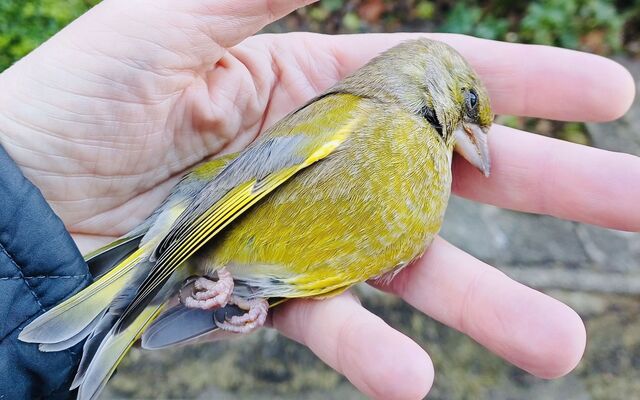SWIFT numbers fell again this year – the bird’s pre-eminent expert Mark Smyth says we lost a further six per cent of their population this summer.
The Antrim man – who has devoted his life to trying to save the amazing bird – says we’ve now seen a 66 per cent decline in their Irish numbers, last year that figure stood at 60 per cent.
But there is hope, and it comes from an unlikely place: Ireland’s Atlantic West. It’s the only area in Ireland where swift numbers have actually increased after Mayo County Council mandated that all newbuilds must have swift nestboxes.
But Mark reports that the ambitious attempts here to reverse the decline by erecting swift towers has sadly failed. “We have 21 of them in the North and as far as I know only one – in Crumlin – has attracted nesting swifts,” he said.
“Swift towers are successful in Italy, for example, where they have been used from the middle ages when swifts were attractive because people used to eat swift chicks. But these towers were built on to the side of a building, and it’s clear that swifts these days are geared in their minds to look at buildings. A tower sitting in a field of whatever is alien to them.”
Mark says the vast number of new student accommodation blocks in Belfast – with their high brick walls – would be perfect for swift bricks, but that chance is being ignored, as it is too at the new Glenmona estate in West Belfast.
“We’re moving away from calling them swift bricks, they’re now universal bird nest bricks, because tits and sparrows and house martins also use them. In Mayo they mandated builders to make sure their estates and buildings were bird-friendly by installing universal nest bricks – and it’s worked.”
Mark says when he started working with swifts in the 1990s the had started – but lately it’s become much more fast and pronounced.
“Not enough is being done by Stormont or the local councils,” he said. “In Mayo the swift numbers are up 23 per cent and they are insisting that every newbuild has to have swifts bricks built in. It can be done.”
Swifts stay in Ireland for just three months to breed and Mark helped Dúlra put up swift boxes at his home along with a caller to attract them. None bred this year but for a few days flocks circled the house, attracted by the calls. It was thrilling to witness these amazing fliers zooming around outside. Hopefully they will have stored his house in their memory banks and will come back next May.
In the absence of official action, it's up to ordinary people to save the gabhlán gaoithe.
•It’s one of the most outstanding books Dúlra has ever opened – and now Crainn & Toir has got the recognition it deserves by picking up the Irish language Book of the Year Award.
Author Máirín Uí Chonchubair spent her whole life researching and writing it and its pages contain more than 70 years’ work.
The Kerry woman managed to create an epic account of all of Ireland’s Crainn & Toir – Trees and Shrubs. And the fact that it is entirely in Irish meant that she could delve into the folklore and historical accounts over millennia – it’s more like an encyclopaedia in size and content. The first 250 pages examine Ireland’s natural history in the context of the world, relating how each tree got here as well as insects and fungi associated with them. Then come the 500 pages devoted to the individual species – we have an incredible 400 of them, and Máirín spent her life criss-crossing the country finding, photographing and researching each one.
n 1811, the forest at Kilcash in County Tipperary was felled by its London-based landlord, the giant oaks and ash netting him many millions of pounds in today’s money. As colonisation reached its brutal zenith, Ireland’s ancient forests were no more, and a Kilcash poet penned the famous lament – ‘Cad a dhéanfaidh muid feasta gan adhmad?’ – ‘What will we do now on without trees?’
Thanks to Máirín, we will forever have an account not only of our trees, but of the special place they have in the hearts and minds of Irish people.
• Reader Moya asks if birds are still nesting at this time of the year after her neighbour saw a dove gathering twigs.
It’s only doves and wood pigeons that refuse to stop nesting when autumn comes – these birds will try to nest whatever the weather. But I think it’s safe to cut garden hedges now as all other birds have stopped nesting. It’s hard to know if the doves and pigeons have any success rearing young as the weather deteriorates – but God loves a trier!
If you’ve seen or photographed anything interesting, or have any nature questions, you can text Dúlra on 07801 414804.







